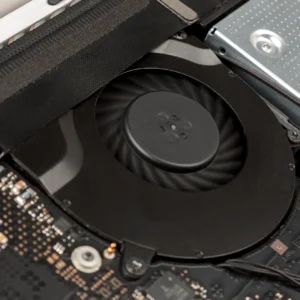- Made In INDIA

In the world of high-performance laptops, one crucial element often overlooked by users is the cooling system. While the focus is often on processing power, graphics capabilities, and display quality, the effectiveness of a laptop’s cooling solution plays a pivotal role in ensuring optimal performance, longevity, and user experience. Let’s delve into why cooling systems are so essential for high-performance laptops and how they work to keep your device running smoothly.
In conclusion, cooling systems are indispensable for high-performance laptops, ensuring optimal performance, stability, and longevity. By effectively dissipating heat generated by powerful components, these systems enhance user experience and protect internal hardware from thermal stress. When choosing a high-performance laptop, it’s essential to consider the quality and efficiency of the cooling solution to maximize the device’s potential and lifespan.
A well-designed cooling system is not just a technical feature; it’s a fundamental aspect of what makes a high-performance laptop reliable and capable of meeting the demands of modern computing tasks.
©2024 Holoware® Computers Pvt. Ltd. | Privacy Policy | Terms & Condition
Roles & Responsibilities:
Preferred candidate profile:
Key Skills:
Location: Guindy & Porur
No of Openings: 3
Hindi Speaking is preferred
Fresher to 4 years experience in the relevant field is preferred.
Job description
We are seeking a motivated and detail-oriented Sales Coordinator to join our dynamic sales team. The Sales Coordinator will play a key role in supporting our sales representatives and ensuring smooth operations within the sales department. This position offers an exciting opportunity to contribute to the success of our sales initiatives and provide excellent customer service to our clients.
Role & responsibilities
Preferred candidate profile
Perks and benefits
Warranty Offers
Services with those steps are available
Solution With 24/7 Support
Get Started


In 1994, Mr.Thangavel started Origin Information Technology (in partnership with Mr. Loganathan) to provide quality computer hardware sales and service. In the year 2022, the company name was changed to “Tinkas Industries Private Limited” to encompass its diversified activities. Mr. Thangavel feels that he can give back to his nation the growth it needs in many ways like providing employment opportunities to many, and doing CSR activities, etc. His goal is to make Tinkas a leader at the National and Internaltional levels.
Holoware CEO abut Tinkas CEO
“The CEO of Tinkas (Mr.Thangavel) is undeniably one of the most practical and resourceful individuals I’ve encountered in Tamil Nadu. His profound understanding of the industry coupled with his diverse business ventures truly exemplifies his wealth of knowledge. Partnering with Tinkas has been a delight, and we eagerly anticipate further growth and collaboration.”
Mr. Ketan Patel is an indomitable entrepreneur revolutionizing the landscape of electronic consumer products worldwide through an unparalleled ‘experiential journey.’ Leading Creative Newtech since 1992, he steered its growth from a Mumbai market trader to a distributor and Brand Licensee. As an alumnus of IIM-Bangalore, Mr Patel leads Creative Newtech with a focus on innovation and strategic leadership. Under his three-decade leadership, Creative Newtech has become India’s market leader, expanding globally across Hong Kong, the Middle East, and the SAARC region.”
Holoware CEO abut Creative Newtech CEO
“The CEO of Creative (Mr.Ketan Patel) is a highly knowledgeable leader, renowned for his expertise in distributorship. His intuitive knack for product selection and sales strategies, both in India and abroad, is impressive. Creative thrives as a powerhouse, fueled by its diverse team and collective expertise. We eagerly look forward to a promising future and further success in our collaboration with Creative.”


Inmac Computers Private Limited is a trailblazing name in the realm of IT services and solutions. With a remarkable inception in 1992 by visionary entrepreneurs Girish Babu and Asha Girish Babu, our company has consistently remained at the forefront of technological innovation, setting new standards for excellence in the industry.
Holoware CEO abut Inmac CEO
“Inmac’s CEO (Mr.Girish Babu) is one of the most humble and generous individuals I’ve ever had the pleasure of meeting. His leadership has been instrumental in steering his team to success, not just in Maharashtra but across various regions in India. Their financial stability over the years speaks volumes about his capabilities. It’s truly a delight to collaborate with someone of his caliber. I look forward to continued partnership with Inmac.”